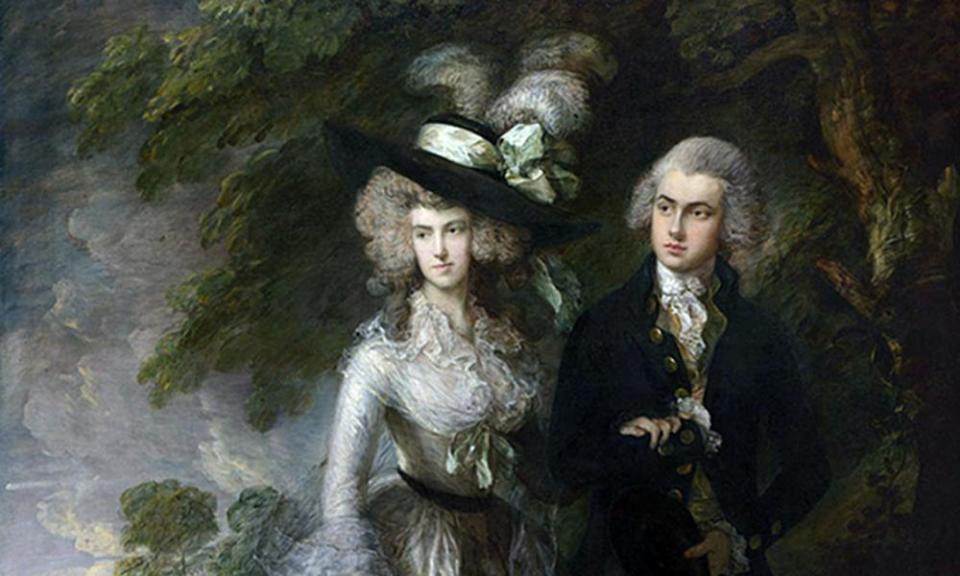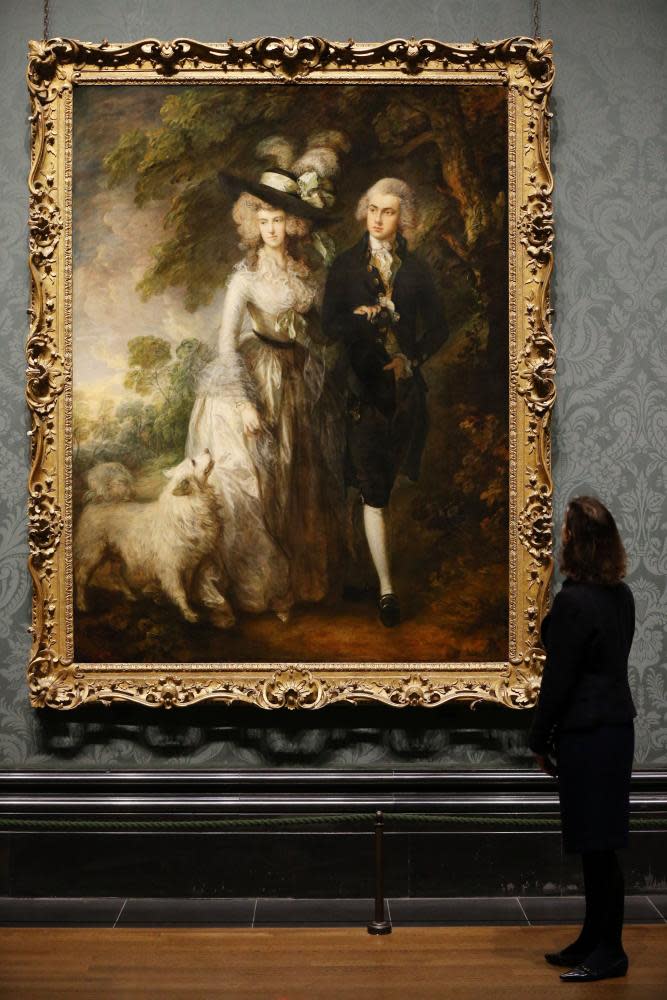Gainsborough painting restored and rehung after 'drill-bit attack'

One of Thomas Gainsborough’s finest portrait paintings has been restored and reinstalled at the National Gallery 10 days after it was allegedly attacked by a man with a drill bit.
The much-loved 1785 painting, Mr and Mrs William Hallett (‘The Morning Walk’), received two scratches of about 1-metre and 65cm long in the incident, which happened on a busy Saturday afternoon.
On Tuesday, the painting was rehung in its usual place in room 34, second along from George Stubbs’ Whistlejacket and next to Joseph Wright of Derby’s An Experiment on a Bird in the Air Pump.
Larry Keith, the gallery’s head of conservation and keeper, praised the speedy conservation operation led by Paul Ackroyd. “It is faster than I thought it would have been, it is faster than I could have done it. It is testament to [the team’s] great skill,” he said.

“There was a tremendous focus on the part of the institution to rally together and to concentrate on returning the picture to show as quickly as we could … a lot of different departments came together.”
Keith said the scratches went through the paint but, fortunately, not the canvas. The restoration was a highly skilled job that involved Ackroyd and others working long hours into evenings and weekends.
“It was about was consolidating the loose paint around the edges of the damage, doing very careful filling of the losses to get the same surface texture and then doing retouching of the losses.”
The retouching is not visible to the human eye though the scratches will always be there if looked at using ultraviolet light. Roughly in an “X” shape, one scratch goes from the dog’s body through the man’s knee; the other goes diagonally from the woman’s heel.
“The key with these kinds of damages is to make sure texture is as evenly matched as you can,” Keith said. “The whole point is the viewer in the gallery now, looking at this picture, can appreciate it at least as well as before with no evidence of the damage.”
The gallery’s deputy director, Susan Foister, said the painting was one of Gainsborough’s finest portraits. “We are delighted to see it back on display so quickly so the public can see it and enjoy it. It’s wonderful.”
The Morning Walk, purchased by the National Gallery for £30,000 in 1954, has gone back on display in one of its busiest spaces – a room that also includes JMW Turner’s The Fighting Temeraire and John Constable’s The Hay Wain.
Room 34 was also the setting for a meeting between Daniel Craig’s James Bond and Ben Whishaw’s Q in Skyfall and the Gainsborough can clearly be spotted over Bond’s shoulder in the scene.
Recent attacks at UK galleries include an incident at Tate Modern in 2012, when a man used quick-drying black ink to write on Mark Rothko’s Black on Maroon; and at the National Gallery in 2011 when Nicolas Poussin’s the Adoration of the Human Calf was vandalised with red spray paint.
After the latest incident, Keith Gregory, 63, of no fixed abode, appeared at Westminster magistrates court last week charged with causing criminal damage.

 Yahoo News
Yahoo News 